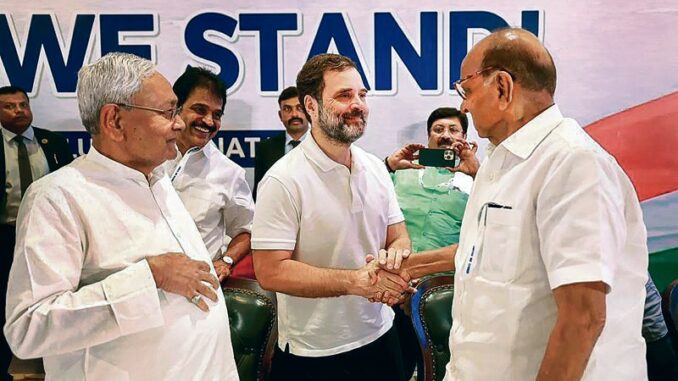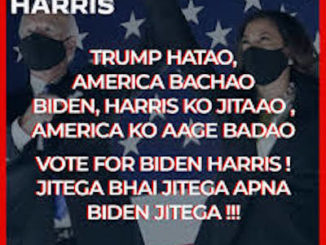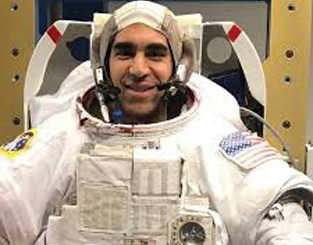
Oppn has its task cut out if it is to cohere into a credible alternative to BJP-led NDA
“After the Patna warm-up exercise, the Opposition took a few steps forward in Bengaluru. The most significant of these were christening the coalition ‘INDIA’ — an acronym for Indian National Developmental Inclusive Alliance (note the absence of the words ‘secularism’ and ‘socialism’, which used to be pet shibboleths), and drafting a resolution that addressed the concerns of each participant.
From here to 2024, the Opposition has its task cut out if it is to cohere into a credible, convincing alternative to the BJP. As for the BJP, the fundamental question is: if its electioneering is going to center around Modi, as it surely will, what was the compulsion to revive the NDA?”

Coalition politics, which dominated the Indian landscape from time to time, gradually receded from popular consciousness when the BJP got a majority on its own in 2014. The party did not need the allies which sailed alongside, hoping to be deal-makers and deal-breakers, as they had done in the past. In his thanksgiving speech in May that year, Prime Minister Narendra Modi had said that despite the BJP being comfortably cushioned against instability, he would take the constituents along and allow them to be part of his government. It was a statement that was condescending and yet a token acknowledgment of the times when BJP dispensations led by PM Atal Bihari Vajpayee depended critically on the support of their associates. It seemed as though Modi did not want the National Democratic Alliance (NDA) put together by Vajpayee to unravel because who knows when he would have to fall back on it again!
It seemed as though the NDA relaunch was a quick response to the forum of 26 Oppn parties.
The NDA, like other amalgams formed by a covenant of practicality and interdependence, mutated periodically. Some parties left when their leaders believed their political interests were threatened, while others departed in search of greener pastures. In 2014, Modi had 11 allies who were part of his dispensation and others who were out of it because they failed to open their accounts in the Lok Sabha polls, such as the Haryana Janhit Congress.
In 2019, the BJP’s old friends such as the undivided Shiv Sena, the Shiromani Akali Dal (SAD) and the AIADMK remained with Modi. A fair-weather ally, the Janata Dal (United) — which quit the NDA before 2014 amid its leader Nitish Kumar’s bitter relationship with Modi — returned, sensing that there was little point in throwing his lot with the ‘secular’ spectrum and being relegated to the margins. By then, the BJP had found new partners in the North-East, a hitherto untrodden region it had set its eyes on. The elections that year marked a new high for the BJP and Modi as they won with a bigger majority that rendered the NDA virtually redundant. Increasingly, the BJP became the strong fulcrum on which power depended. Mere appendages to a powerful core, the NDA constituents could not exercise the leverage they had in Vajpayee’s somewhat wobbly governments.
The difference between that period and the present one is that Modi never cared to set up a steering committee, while the NDA meetings became a thing of the past. Vajpayee made it a point to nominate the leader of a non-BJP party as the steering committee’s convener. Modi’s NDA was faceless. Its near-anonymity briefly broke over a contretemps between Chirag Paswan, son of Ram Vilas Paswan, and his uncle Pashupati Kumar Paras over who would claim Paswan Senior’s legacy after his death. The BJP drove a wedge in the Paswan clan and spirited away the uncle, who walked away with the MPs and MLAs of the Rashtriya Lok Janshakti Party (RLJP), leaving Chirag with nothing except his own Lok Sabha seat. Paras was the first ally who was inducted into Modi’s BJP-heavy Cabinet out of sheer expediency.
The NDA’s then-and-now saga had an unexpected twist when BJP president JP Nadda proclaimed that 38 allies would participate in a meeting of the coalition in Delhi on July 18. Thirty-eight? Which were these parties? The Sena, one of the BJP’s oldest allies, was split into two, with the BJP getting the faction headed by rebel Eknath Shinde on its side. The faction helmed by Uddhav Thackeray, founder Balasaheb Thackeray’s heir, who had earlier snapped his ties with the BJP, became a part of the Opposition’s Maha Vikas Aghadi; Uddhav was the Maharashtra CM for a couple of years. Uddhav was outfoxed by the BJP’s machinations. The SAD broke away from the NDA in 2020, while the Janata Dal (United) returned to the Mahagathbandhan in Bihar last year.
Maharashtra, which experienced a tectonic shift in the form of the Sena split, was subjected to another seismic jolt when the Nationalist Congress Party (NCP), headed by strongman Sharad Pawar, broke. The mutineer was none other than Pawar’s nephew Ajit Pawar, who walked into the NDA. During Tuesday’s NDA show, the BJP got Chirag Paswan on board. Though the Telugu Desam Party did not get an invite for the meeting, it is also expected to return to the NDA fold.
Modi was the centerpiece of the event as the leaders of each constituent vied to sing his praises. In his long speech, he trained his guns on another meeting which concluded shortly before the NDA members sat together.
Over 2,000 km away in Bengaluru, the Opposition parties met in a gathering of the Congress’ steadfast friends such as the DMK, the Rashtriya Janata Dal and the Jharkhand Mukti Morcha and newer ones like Uddhav Thackeray’s Sena faction, Aam Aadmi Party, the JD(U), the Trinamool Congress and the Samajwadi Party-Rashtriya Lok Dal combine. This meeting was planned soon after the Opposition rallied around for its first congregation at Patna on June 23. It seemed as though the NDA relaunch was a quick response to this forum of 26 parties, as though it was a parallel demonstration of strength.
After the Patna warm-up exercise, the Opposition took a few steps forward in Bengaluru. The most significant of these were christening the coalition ‘INDIA’ — an acronym for Indian National Developmental Inclusive Alliance (note the absence of the words ‘secularism’ and ‘socialism’, which used to be pet shibboleths), and drafting a resolution that addressed the concerns of each participant.
From here to 2024, the Opposition has its task cut out if it is to cohere into a credible, convincing alternative to the BJP. As for the BJP, the fundamental question is: if its electioneering is going to center around Modi, as it surely will, what was the compulsion to revive the NDA?
(The author is a senior journalist)





Be the first to comment